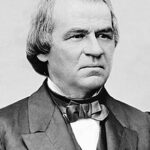The Strategic Alaska Purchase Decision
President Andrew Johnson supported Secretary of State William Seward’s bold Alaska Purchase negotiations with Russia in March 1867. The treaty secured 586,412 square miles of territory for $7.2 million. This decision doubled America’s geographic size overnight. 📊 The price equaled roughly two cents per acre, making it history’s greatest land bargain.
Overcoming Political Opposition
Critics nicknamed the deal ‘Seward’s Folly’ and ‘Andrew Johnson’s Polar Bear Garden.’ Many congressmen questioned purchasing seemingly worthless frozen wasteland. Johnson’s administration faced impeachment proceedings during negotiations. Despite political turmoil, Johnson prioritized America’s long-term strategic interests. ⚠️ The House of Representatives initially refused funding for the purchase.
Securing Congressional Approval
Seward worked tirelessly to convince skeptical lawmakers of Alaska’s value. The Senate ratified the treaty by one vote margin in April 1867. Russian financial pressures from the Crimean War motivated their sale. 💰 Congress finally appropriated funds in July 1868, completing the historic transaction.
Impact:
Economic Transformation and Resource Discovery
The Alaska Purchase generated over $100 billion in resource wealth within a century. Gold discoveries in the Klondike region began just thirty years later. Oil reserves found in Prudhoe Bay revolutionized America’s energy independence. 💰 Alaska’s fishing industry became worth billions annually, validating Johnson’s strategic vision.
Strategic Military and Geographic Advantages
Alaska provided crucial Pacific Ocean access and Arctic territory control. The territory served as a vital staging ground during World War II. Military bases in Alaska became essential for Cold War defense strategies. 🌍 The purchase prevented potential Russian expansion into North America’s western regions.
Long-term Historical Vindication
Alaska achieved statehood in 1959, becoming America’s largest state. The territory’s strategic location proved invaluable for trade with Asia. Modern Alaska generates massive revenue through tourism, oil, and natural resources. 🔥 What critics called ‘Seward’s Folly’ became one of history’s most successful territorial acquisitions. Johnson’s decision demonstrated remarkable foresight despite contemporary political opposition.
